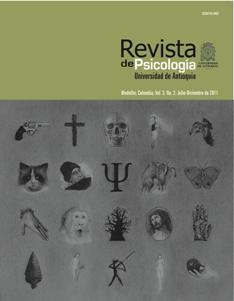Impulsividad en la compra en estudiantes universitarios
DOI:
https://doi.org/10.17533/udea.rp.11366Palabras clave:
Impulsividad, Compra, UniversitariosResumen
Descargas
Citas
Assael, H. (1999). Comportamiento del consumidor. México, D .F: International Thomson Editores.
Brown, D. y Nowlis,S. (2003). The effect of examin-ing actual products or product descriptions on consumer preference. Journal of Consumer Psychology,13, 431-440
Chernev, A. (2004) Goal-attribute Compatibility in Con-sumer Choice. Journal of Consumer Psychology, 14, 141-150 DOI: https://doi.org/10.1207/s15327663jcp1401&2_16
Chernev,A.(2003). Product Assortment and Individual Decision Processes. Journal of Personality & Social Psychology, 85, 151-162. DOI: https://doi.org/10.1037/0022-3514.85.1.151
Della, A. y Loudon, D. (1995). Comportamiento del consumidor: conceptos y aplicaciones. México, D.F: McGraw Hill.
Dholakia, U.M. (2001). A motivational process model of product involvement and consumer risk percep-tion. European Journal of Marketing, 35, 1340-1362. DOI: https://doi.org/10.1108/EUM0000000006479
Dittman, H. (2005).Compulsive buying - a growing concern? An examination of gender, age, and endorsement of materialistic values as predic-tors. British Journal of Psychology , 96, 467-503. DOI: https://doi.org/10.1348/000712605X53533
Escalas, J. y Bettman, J. (2005) Self-Construal, Refer-ence Groups, and Brand Meaning. Journal of Consumer Research. 32, 3; 378-390. DOI: https://doi.org/10.1086/497549
Faber, R. y Youn, S. (2002) The Dimensional Structure of Consumer Impulsivity: Measurement and valida-tion. Advances in Consumer Research, 29, 280. DOI: https://doi.org/10.1086/341577
Fedorikhin, A y Shiv, B.(1999) Heart and Mind in Con-flict: The Interplay of Affect and Cognition in Consumer Decision Making. Journal of Consumer Research, 26, 278-292. DOI: https://doi.org/10.1086/209563
Goss, J.(2006). Geographies of comsumption: the work of consumption. Progress in Human Geography, 30, 237-249. DOI: https://doi.org/10.1191/0309132506ph604pr
Hansen,T.(2005).Perspectives on consumer decision making: An integrated approach. Journal of Consumer Behaviour, 4, 420-437. DOI: https://doi.org/10.1002/cb.33
Hawkins, D., Best,R. y Coney, K. (1997). Comportamien-to del consumidor. Bogotá Colombia: McGraw-Hill Interamericana S.A.
Kacen, J. y Lee, J. A. (2002). The Influence of Culture on Consumer Impulsive Buying Behavior. Journal of Consumer Psychology, 12,163-176. DOI: https://doi.org/10.1207/153276602760078686
Karlsson,N., Gärling,T., Dellgran,P. y Klingander,B. (2005). Social Comparison and Consumer Behav-ior: When Feeling Richer or Poorer Than Others Is More Important Than Being So. Journal of Applied Social Psychology, 35, 1206-1222. DOI: https://doi.org/10.1111/j.1559-1816.2005.tb02167.x
Kim, J.K. y Park, J. (2005) The effects of decoys on preference shifts: the role of attractiveness and providing justification . Journal of Consumer Psychology, 15, 94-107. DOI: https://doi.org/10.1207/s15327663jcp1502_2
Kovalchik,S., Camerer,C., Grether,D., Plott,C. y Allman, J. (2005). Aging and decision making: a compari-son between neurologically healthy elderly and young individuals. Journal of Economic Behavior & Organization, 58, 79-94. DOI: https://doi.org/10.1016/j.jebo.2003.12.001
Leo, C., Bennett, R. y Hartel, C. (2005) Cross-Cultural Differences in Consumer Decision- Making Styles. Cross Cultural Management. Patringto.12, 32-63. DOI: https://doi.org/10.1108/13527600510798060
Liao, S.L. (2006). The Effects of Nonmonetary Sales Promotions on Consumer Preferences: The Contingent Role of Product Category. Journal of American Academy of Business, 2, 196-204.
Loudon, D. y Della Bitta, A. (1996). Comportamiento del Consumidor: conceptos y aplicaciones. Mexico: Mc Graw Hill, S.A.
Mathur,A.,Moschis,G. y Lee,E.(2003). Life events and brand preference changes. Journal of Consumer Psychology, 3,129-141. DOI: https://doi.org/10.1002/cb.128
McCabe, D. y Nowlis, S. (2003) The Effect of Examin-ing Actual Products or Product Descriptions on Consumer Preference. Journal of Consumer Psychology, 13, 431-439. DOI: https://doi.org/10.1207/S15327663JCP1304_10
Mcquarrie, E. y Phillips B. (2005) Indirect Persuasion In Advertising: How Consumers Process Metaphors Presented In Pictures And Words. Journal Of Advertising. 34, 7-20 DOI: https://doi.org/10.1080/00913367.2005.10639188
Mitchell, A. (2006) Emotional or rational, choice has never been so expensive. Marketing Week, 9, 28.
Mourali,M., Laroche,M.y Pons,F. (2005). Antecedents of consumer relative preference for interpersonal information sources in pre-purchase search. Journal of Consumer Behaviour, 4, 307-318. DOI: https://doi.org/10.1002/cb.16
Priester, J., Dholakia, U y Fleming, M. (2004) When and Why the Background Effect Emerges: Thought Engenders Meaning by Influencing the Perception of Applicability. Journal of Consumer Research. Gainesville, 31, 491-502. DOI: https://doi.org/10.1086/425084
Raeburn P. (2004). Decisions, decisions. Health, 18, 87-90.
Rook, D.y Hoch, S. (1985) Consuming impulses. Advances in Consumer Research,12, 23-27. DOI: https://doi.org/10.1086/208514
Sampieri, R (1998). Metodología de la investigación. Mc Graw- Hill Interamericano. México D.F.
Schindler, R. y Holbrook, M. (2003). Nostalgia for early experience as a determinant of consumer pref-erences. Psychology & Marketin, 20, 275-290.
Schindle, R. y Holbrook ,M. (2003). Nostalgia for early experience as a determinant of consumer pref-erences. Psychology & Marketing, 20, 275-290. DOI: https://doi.org/10.1002/mar.10074
Solomon, M. (1997) Comportamiento del Consumidor. México: Prentice Hall Hispanomericana S.A.
Tara, P. (2005). This Is Your Brain at the Mall: Why Shopping Makes You Feel So Good. Wall Street Journal, 246,122-124.
Walsh, G. y Mitchell, V. (2005) Demographic characteris-tics of consumers who find it difficult to decide. Marketing Intelligence & Planning. 23, 281-296. DOI: https://doi.org/10.1108/02634500510597319
White, T. B. (2005) Consumer Trust and Advice Accep-tance: The Moderating Roles of Benevolence, Expertise, and Negative Emotions. Journal of Consumer Psychology, 15, 141-148. DOI: https://doi.org/10.1207/s15327663jcp1502_6
Williams, P. y Drolet, A (2005) Age-related differences in responses to emotional advertisements. Journal of consumer research, 3, 343-355 DOI: https://doi.org/10.1086/497545
Descargas
Publicado
Cómo citar
Número
Sección
Licencia
Los textos enviados para evaluación en la Revista de Psicología Universidad de Antioquia, no deben estar publicados previamente, ni aceptados para su publicación futura en otra revista.
Al aceptarse los envíos para la publicación en la Revista, el autor cederá parcialmente sus derechos, conservando su uso no-comercial y el derecho de circulación académica como archivo de acceso libre.
Excepto que se establezca de otra forma, el contenido de esta revista cuenta con una licencia Creative Commons "reconocimiento, no comercial-compartir igual" Colombia 4.0, que puede consultarse aquí.
Para más información revisar las Políticas editoriales.











